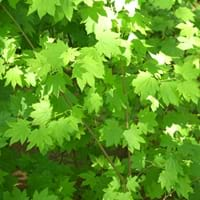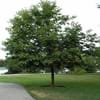Life Span
Perennial
Perennial
Origin
North America, Northwestern United States
Australia
Types
Not Available
Not Available
Habitat
Forests, gardens, Open Forest, Tropical regions, Wet forest
Scrubs, tussock grasslands, Upland savannas
USDA Hardiness Zone
5-9
10-11
Sunset Zone
A3, 2b, 3a, 3b, 4, 5, 6, 14, 15, 16, 17
8, 9, 12, 13, 14, 15, 16, 17, 18, 19, 20, 21, 22, 23, 24
Habit
Clump-Forming
Upright/Erect
Flower Color
White, Purple
Lemon yellow
Flower Color Modifier
Bicolor
Bicolor
Fruit Color
Red
Gray Green
Leaf Color in Spring
Green, Light Green
Blue Green
Leaf Color in Summer
Green, Light Green
Blue Green
Leaf Color in Fall
Red, Orange, Dark Red, Orange Red
Blue Green
Leaf Color in Winter
Not Available
Blue Green
Leaf Shape
Maple shaped
Long Narrow
Plant Season
Spring, Summer, Fall, Winter
Spring
Sunlight
Full Sun, Partial Sun, Partial shade, Full Shade
Full Sun
Type of Soil
Clay, Loam, Sand
Loam, Sand
The pH of Soil
Acidic, Neutral, Alkaline
Acidic, Neutral, Alkaline
Soil Drainage
Average
Well drained
Bloom Time
Early Spring
Spring, Late Winter
Tolerances
Wet Site
Drought
Where to Plant?
Ground
Ground
How to Plant?
Stem Planting
Seedlings
Plant Maintenance
Medium
Medium
Watering Requirements
Allow soil to be completely dry in between waterings, Requires consistently moist soil, Requires watering in the growing season, Water Deeply
Do not water excessively
In Summer
Lots of watering
Lots of watering
In Spring
Moderate
Moderate
In Winter
Average Water
Average Water
Soil pH
Acidic, Neutral, Alkaline
Acidic, Neutral, Alkaline
Soil Type
Clay, Loam, Sand
Loam, Sand
Soil Drainage Capacity
Average
Well drained
Sun Exposure
Full Sun, Partial Sun, Partial shade, Full Shade
Full Sun
Pruning
Pinch or prune as they grow to promote branching and bushiness, Prune every year, Prune for shortening long shoots, Prune if you want to improve plant shape, Remove deadheads
Remove dead or diseased plant parts, Requires little pruning
Fertilizers
All-Purpose Liquid Fertilizer
All-Purpose Liquid Fertilizer, No fertilizers needed
Pests and Diseases
Billbugs, Fungal Diseases, Red blotch
Insects, Root rot
Plant Tolerance
Drought
Drought
Flower Petal Number
Single
Single
Foliage Texture
Medium
Fine
Foliage Sheen
Matte
Matte
Attracts
Not Available
Butterflies
Allergy
no allergic reactions
Asthma, Eye irritation, Headache, Nose Irritation, Throat itching, Vomiting
Aesthetic Uses
Showy Purposes
Showy Purposes
Beauty Benefits
Not Available
Not Available
Environmental Uses
Air purification
Air purification, soil stabilisation
Medicinal Uses
No Medicinal Use
Not Available
Part of Plant Used
Not Available
Flowers, Sap, Seeds
Other Uses
Not Available
Used as a dye, Wood is used fore making tools
Used As Indoor Plant
No
No
Used As Outdoor Plant
Yes
Yes
Garden Design
Feature Plant, Foundation, Mixed Border, Topiary / Bonsai / Espalier
Shade Trees, Street Trees
Botanical Name
ACER circinatum
ACACIA aneura
Common Name
Oregon Vine Maple, Vine Maple
Mulga, True Mulga
In German
Wein-Ahorn
Mulga
In French
Maple Vine
Mulga
In Spanish
arce vid
Mulga
In Greek
αμπέλου Maple
mulga
In Portuguese
bordo de videira
Mulga
In Polish
Vine Maple
Mulga
In Latin
vitis Maple
Mulga
Phylum
Tracheophyta
Magnoliophyta
Class
Magnoliopsida
Magnoliopsida
Family
Aceraceae
Fabaceae
Clade
Angiosperms, Eudicots, Rosids
Angiosperms, Eudicots, Rosids
Tribe
Not Available
Not Available
Subfamily
Hippocastanoideae
Not Available
Number of Species
Not Available
Not Available
Season and Care of Vine Maple and Mulga Tree
Season and care of Vine Maple and Mulga Tree is important to know. While considering everything about Vine Maple and Mulga Tree Care, growing season is an essential factor. Vine Maple season is Spring, Summer, Fall and Winter and Mulga Tree season is Spring, Summer, Fall and Winter. The type of soil for Vine Maple is Clay, Loam, Sand and for Mulga Tree is Loam, Sand while the PH of soil for Vine Maple is Acidic, Neutral, Alkaline and for Mulga Tree is Acidic, Neutral, Alkaline.
Vine Maple and Mulga Tree Physical Information
Vine Maple and Mulga Tree physical information is very important for comparison. Vine Maple height is 610.00 cm and width 610.00 cm whereas Mulga Tree height is 550.00 cm and width 370.00 cm. The color specification of Vine Maple and Mulga Tree are as follows:
Vine Maple flower color: White and Purple
Vine Maple leaf color: Green and Light Green
Mulga Tree flower color: Lemon yellow
- Mulga Tree leaf color: Blue Green
Care of Vine Maple and Mulga Tree
Care of Vine Maple and Mulga Tree include pruning, fertilizers, watering etc. Vine Maple pruning is done Pinch or prune as they grow to promote branching and bushiness, Prune every year, Prune for shortening long shoots, Prune if you want to improve plant shape and Remove deadheads and Mulga Tree pruning is done Remove dead or diseased plant parts and Requires little pruning. In summer Vine Maple needs Lots of watering and in winter, it needs Average Water. Whereas, in summer Mulga Tree needs Lots of watering and in winter, it needs Average Water.





